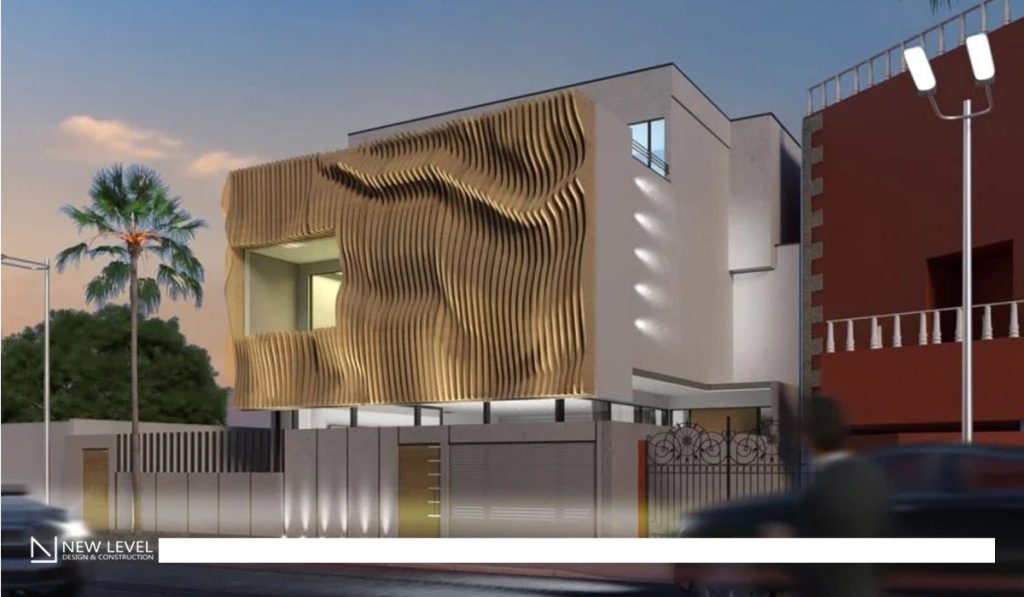Villa design embodies a blend of luxury, comfort, and functionality. These residences offer expansive spaces, personalized features, and a seamless integration of indoor and outdoor living. Modern villas draw inspiration from various architectural styles while prioritizing the needs and preferences of their inhabitants. This article explores the key elements of villa design, highlighting the principles that create these opulent yet practical living spaces.

Villa architecture has a rich history, evolving from the grand country houses of ancient Rome to contemporary luxury homes. Originally designed as retreats for the elite, villas have maintained their status as symbols of affluence and refined taste. Over time, villa design has adapted to incorporate modern amenities and sustainability principles, blending tradition with innovation.
Several fundamental elements define villa design, contributing to its distinctive appeal and functionality.
Expansive Layouts: Villas are characterized by their generous floor plans, offering ample space for living, entertaining, and relaxation. Open layouts with high ceilings create a sense of grandeur and fluidity between rooms.
Indoor-Outdoor Integration: A hallmark of villa design is the seamless integration of indoor and outdoor spaces. Large windows, sliding glass doors, and open terraces allow for an uninterrupted flow, enhancing the connection with nature.
Luxurious Materials: The use of high-quality materials such as marble, hardwood, and natural stone adds a touch of elegance and sophistication. These materials not only enhance the aesthetic appeal but also ensure durability and longevity.
Custom Features: Villas often include custom features tailored to the owner’s lifestyle and preferences. This can range from home theaters and wine cellars to private gyms and spa areas, creating a personalized living experience.
Landscaping and Gardens: Thoughtfully designed outdoor spaces, including gardens, courtyards, and swimming pools, are integral to villa design. These areas provide serene retreats and enhance the overall beauty of the property.
Villa design encompasses a variety of architectural styles, each offering unique characteristics and aesthetic appeal.
Modern Villas: Characterized by clean lines, minimalistic decor, and innovative use of materials, modern villas emphasize functionality and simplicity. Large glass facades, open spaces, and contemporary finishes are common features.
Mediterranean Villas: Inspired by the coastal regions of Southern Europe, Mediterranean villas feature stucco exteriors, red-tiled roofs, and arched windows. These designs often include lush gardens, courtyards, and terraces to maximize outdoor living.
Traditional Villas: Drawing on classical architectural principles, traditional villas exude timeless elegance. Elements such as symmetrical facades, grand entrances, and ornate detailing are hallmarks of this style.
Eco-Friendly Villas: With a growing emphasis on sustainability, eco-friendly villa designs incorporate green building practices and materials. Features like solar panels, rainwater harvesting systems, and energy-efficient appliances are becoming increasingly popular.
Designing a villa requires careful planning and attention to detail. Here are some key considerations to keep in mind:
Site Selection: Choosing the right location is crucial. Consider factors such as views, privacy, and accessibility. The site should complement the design and enhance the overall living experience.
Functional Layout: Ensure the layout meets the needs of the inhabitants. This includes considering the flow of spaces, room proportions, and accessibility. Open-plan designs can enhance connectivity, while private areas provide seclusion.
Material Selection: Choose materials that offer both aesthetic appeal and durability. Natural materials like stone and wood can create a warm, inviting atmosphere, while modern finishes like glass and steel add a contemporary touch.
Sustainable Design: Incorporate sustainable practices in the design. This includes optimizing natural light, improving insulation, and using energy-efficient systems. Sustainable design not only benefits the environment but also enhances the villa’s long-term value.
Personalization: Tailor the design to reflect personal preferences and lifestyle. Consider including custom features such as a home office, entertainment area, or wellness space to create a unique and personalized environment.
Interior design plays a pivotal role in enhancing the functionality and aesthetic appeal of a villa. It involves selecting furnishings, colors, and decor that complement the architectural style and create a cohesive look.
Spatial Planning: Effective spatial planning ensures each room is functional and comfortable. This includes considering furniture placement, room proportions, and the flow of spaces.
Lighting: Lighting is crucial in villa design, influencing both functionality and ambiance. Incorporate a mix of natural light, ambient lighting, and task lighting to create a balanced and inviting atmosphere.
Color Palette: Choose a color palette that reflects the desired mood and complements the overall design. Neutral tones can create a calm and sophisticated environment, while bold accents add vibrancy and character.
Textures and Materials: Use a variety of textures and materials to add depth and interest to the interiors. Combining different finishes, such as wood, metal, and fabric, can create a rich and dynamic look.
Villa design is a sophisticated blend of luxury, functionality, and personalization. By incorporating expansive layouts, high-quality materials, and custom features, villas offer an unparalleled living experience. Whether inspired by modern minimalism, Mediterranean charm, or eco-friendly principles, the key elements of villa design create spaces that are both beautiful and practical. Thoughtful planning and attention to detail ensure that each villa reflects the unique tastes and lifestyle of its inhabitants, making it a true sanctuary of comfort and elegance.
Source: